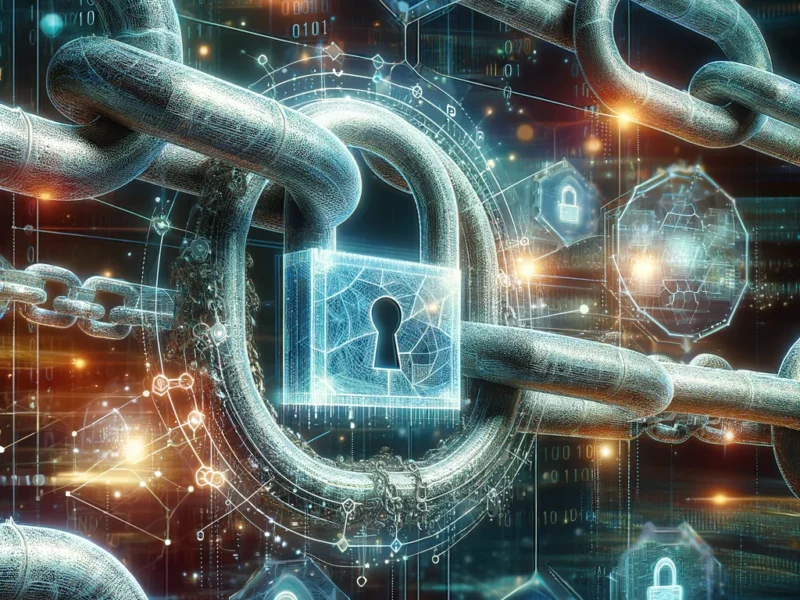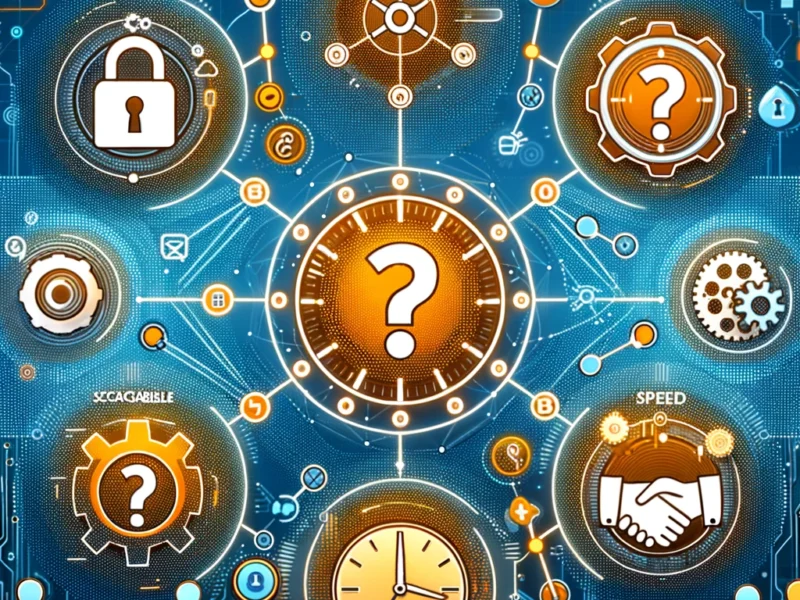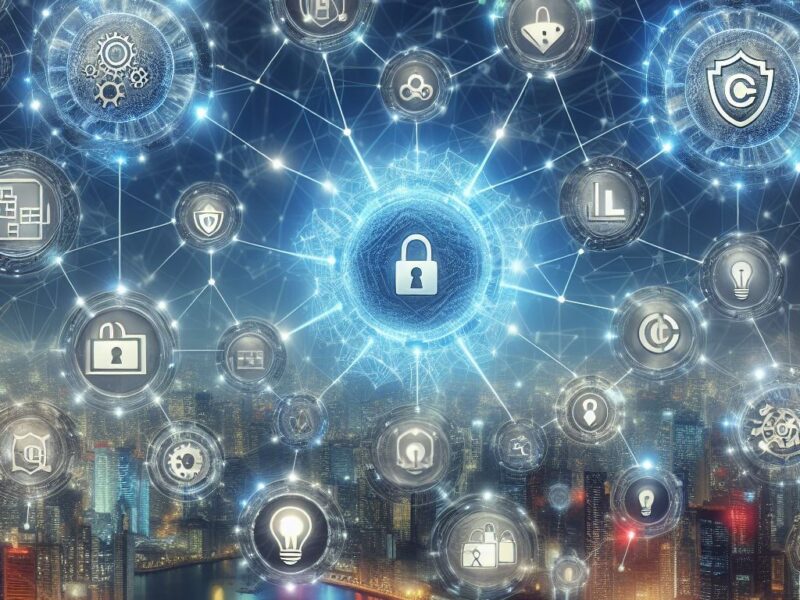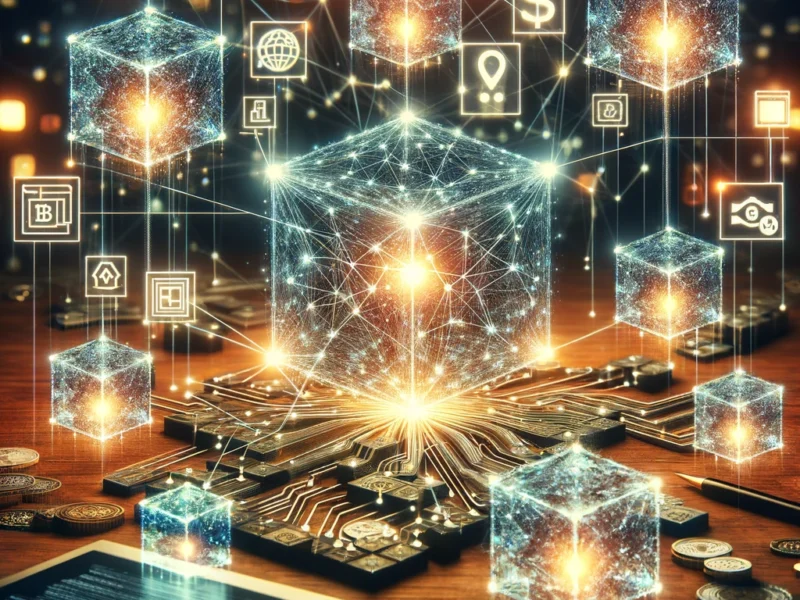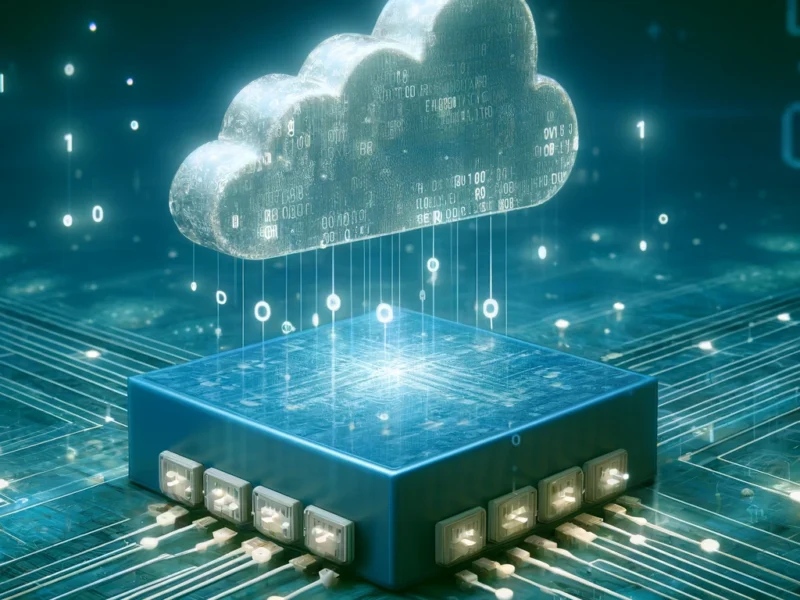When disaster strikes, every second counts. Blockchain, the technology behind cryptocurrencies like Bitcoin, has the potential to transform the way we respond to crises.
By providing a secure, decentralized, and transparent platform for transactions and data management, blockchain has become a powerful tool in the fight against the devastating impact of disasters. In this post, we will explore the role of blockchain in disaster relief and humanitarian aid.
Jump To
Toggle1. Streamlining Donation Processes
One of the most significant challenges in disaster relief is ensuring that donations reach those in need quickly and efficiently. Traditional donation methods often involve intermediaries, lengthy processing times, and a lack of transparency. This is where blockchain comes in.
By leveraging blockchain technology, organizations can create transparent and secure donation platforms. Donors can track their contributions easily and ensure that their funds are being used as intended.
Smart contracts, a key feature of blockchain, can automate the distribution of funds based on predefined conditions, eliminating the need for manual processing and reducing the risk of fraud.
A good example of this is the BitGive Foundation, a nonprofit organization that utilizes blockchain to facilitate transparent donations. Through their GiveTrack platform, donors can see exactly how their contributions are being used, down to the transaction level. This level of transparency builds trust between donors and relief organizations, encouraging more people to contribute to disaster relief efforts.
2. Efficient Distribution of Aid
In the aftermath of a disaster, the swift and efficient distribution of aid is crucial. However, traditional supply chain management systems can be difficult and prone to delays. Blockchain technology offers a solution to streamline the distribution process.
By creating a decentralized and transparent supply chain on the blockchain, relief organizations can track the movement of goods from the point of origin to the final destination.
Each step of the process is recorded on the blockchain, providing a tamper-proof record of the journey. This transparency helps to prevent the diversion of aid and ensures that resources reach those who need them most.
The World Food Programme (WFP), the food assistance branch of the United Nations, has been exploring the use of blockchain to enhance the efficiency of their aid delivery. In a pilot project in Pakistan, the WFP used blockchain to distribute cash assistance to beneficiaries. The results were promising, with the blockchain-based system reducing transaction costs and increasing transparency.
3. Enhancing Coordination and Communication
Effective coordination and communication among relief organizations, government agencies, and volunteers are essential in disaster response. However, the lack of interoperability between different systems can hinder these efforts. Blockchain technology can help bridge these gaps and improve coordination.
By creating a shared, decentralized platform on the blockchain, organizations can securely share information and coordinate their efforts. This can include sharing data on the needs of affected communities, tracking the distribution of resources, and collaborating on relief strategies.
The blockchain’s immutable nature ensures that the information remains accurate and tamper-proof.
The American Red Cross is exploring the potential of blockchain to improve their disaster response efforts. In partnership with the blockchain startup Hala Systems, they are developing a blockchain-based platform called “Red Crescent” to enhance coordination and information sharing among relief organizations. By leveraging blockchain, they aim to create a more efficient and effective disaster response ecosystem.
4. Empowering Affected Communities
Blockchain technology can also play a role in empowering affected communities after a disaster. By providing individuals with secure digital identities on the blockchain, relief organizations can ensure that aid reaches the right people and prevents fraud.
In refugee camps, for example, blockchain-based identity systems can help individuals access essential services and aid without the need for physical documents, which may have been lost during the disaster.
The UN Refugee Agency (UNHCR) has been exploring the use of blockchain to create digital identities for refugees, enabling them to receive cash assistance, access healthcare, and participate in the local economy.
Also, blockchain can enable the creation of local cryptocurrencies or tokens that can be used to stimulate economic recovery in disaster-stricken areas. These tokens can be used to purchase goods and services within the community, supporting local businesses and fostering resilience.
Challenges and Considerations
While the potential of blockchain in disaster relief and humanitarian aid is significant, it is important to acknowledge the challenges and considerations associated with its implementation.
One challenge is the need for robust infrastructure and technical expertise to deploy and maintain blockchain solutions in disaster-prone areas. Relief organizations must invest in the necessary technology and training to ensure the effectiveness of blockchain-based systems.
Also, the adoption of blockchain requires a shift in mindset and the willingness to embrace new ways of working. Organizations must be open to collaboration and data sharing, breaking down traditional methods and embracing a more transparent and decentralized approach.
Key Takeaways
- Blockchain technology has the potential to revolutionize disaster relief and humanitarian aid by providing a secure, transparent, and efficient platform for transactions and data management.
- Blockchain can streamline donation processes, enabling donors to track their contributions and ensuring funds reach those in need quickly and efficiently.
- By creating a decentralized and transparent supply chain on the blockchain, relief organizations can enhance the efficiency of aid distribution and prevent the diversion of resources.
- Blockchain-based platforms can improve coordination and communication among relief organizations, government agencies, and volunteers, and enable collaboration.
- Blockchain can empower affected communities by providing secure digital identities, enabling access to essential services, and fostering economic recovery through local cryptocurrencies or tokens.
- Implementing blockchain in disaster relief requires investment in infrastructure, technical expertise, and a willingness to embrace new ways of working and collaborate across organizations.
FAQs
1. What is blockchain technology, and how does it work?
A: Blockchain is a decentralized, distributed ledger technology that records transactions across a network of computers. Each block in the chain contains a cryptographic hash of the previous block, creating an immutable and transparent record of transactions.
2. How can blockchain ensure the transparency and accountability of donations in disaster relief?
A: Blockchain-based donation platforms allow donors to track their contributions, providing a transparent record of how funds are being used. Smart contracts can automate the distribution of funds based on predefined conditions, reducing the risk of fraud and ensuring accountability.
3. Can blockchain help prevent the diversion of aid resources during distribution?
A: Yes, by creating a decentralized and transparent supply chain on the blockchain, relief organizations can track the movement of goods from the point of origin to the final destination. Each step of the process is recorded on the blockchain, making it tamper-proof and preventing the diversion of aid.
4. How can blockchain improve coordination among relief organizations during a disaster?
A: Blockchain-based platforms can provide a shared, decentralized space for relief organizations to securely share information, coordinate efforts, and collaborate. The immutable nature of blockchain ensures that the information remains accurate and tamper-proof.
5. What are some challenges associated with implementing blockchain in disaster relief?
A: Implementing blockchain in disaster relief requires investment in robust infrastructure and technical expertise. Organizations must be willing to embrace new ways of working, foster collaboration, and break down traditional silos. Additionally, the adoption of blockchain requires a shift in mindset and the willingness to embrace transparency and decentralization.
6. Are there any real-world examples of blockchain being used in disaster relief and humanitarian aid?
A: Yes, organizations like the BitGive Foundation use blockchain to facilitate transparent donations, while the World Food Programme has piloted blockchain-based systems for cash assistance distribution. The American Red Cross is also exploring blockchain to improve coordination and information sharing among relief organizations.


